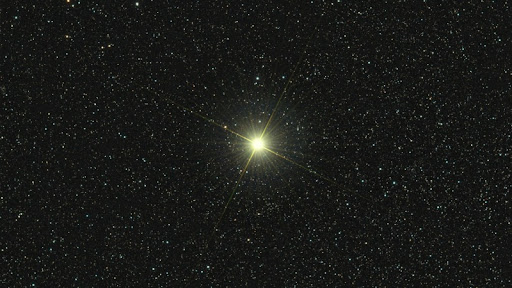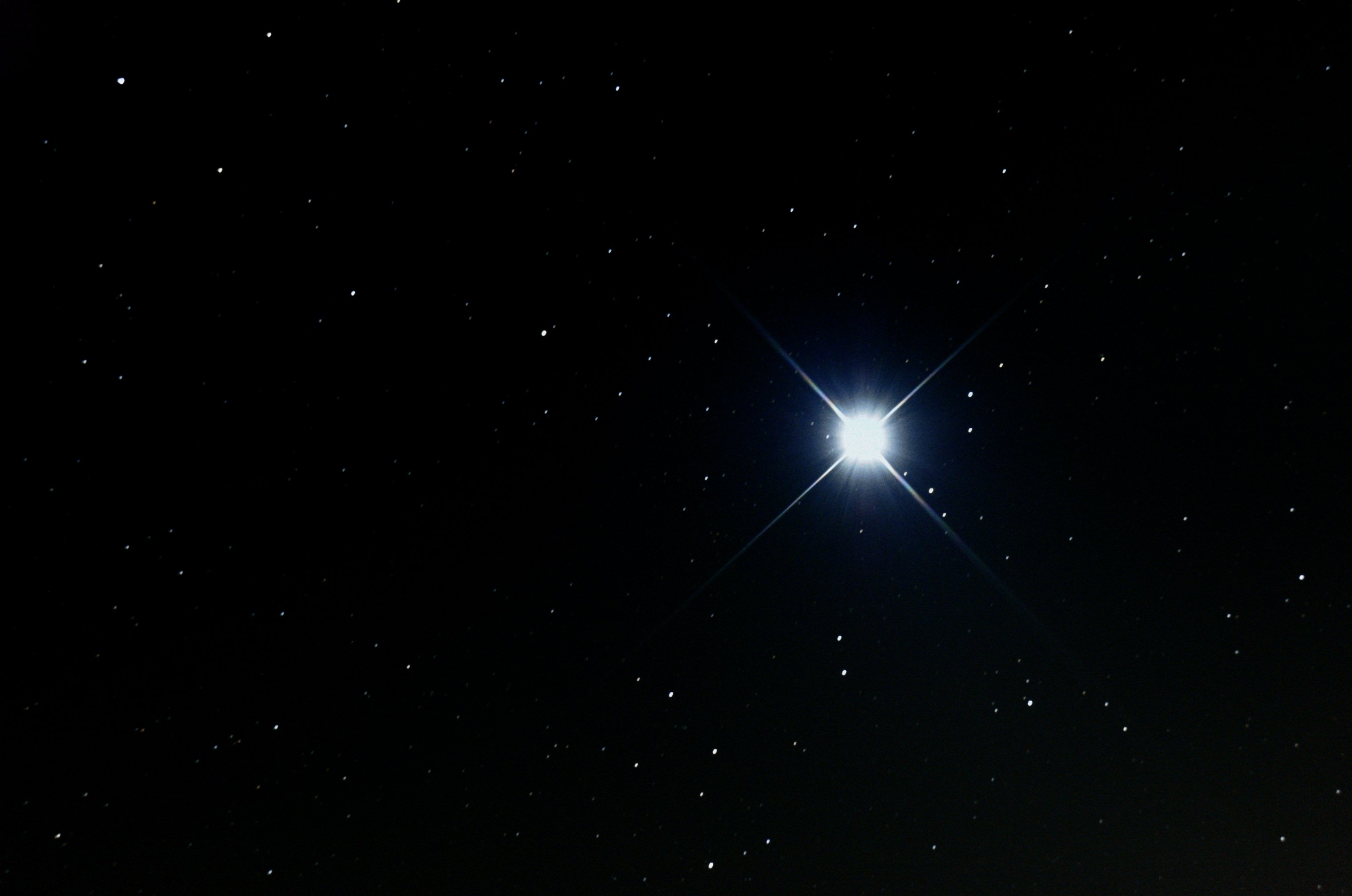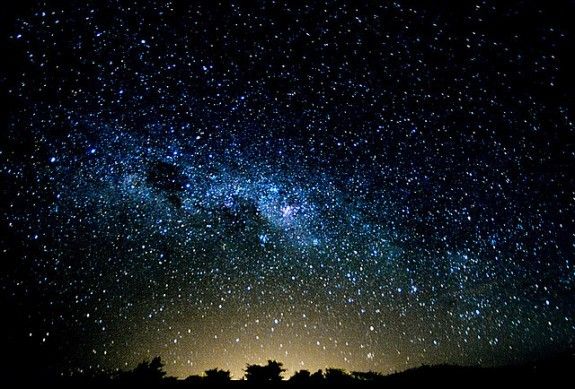Has anyone ever glanced up and given thought to which stars most brilliantly shine? Though the midnight sky are illuminated with great brightness, some stars clearly stand out. These are the top 10 brightest stars ranked from their apparent brightness from Earth. The size, temperature, and distance from us of a star define its brightness. While some of these amazing giants are shockingly near neighbors in our galaxy, others are gigantic powerhouses separated billions of light years apart.
Astronomers rank stars in apparent magnitude; lower numbers suggest brighter objects. The top 10 list consists mostly of local stars mostly sky-dominated combined with far-off superstars. For instance, both its great energy production and close closeness help the brightest star, Sirius shine. Conversely, stars like Canopus and Rigel shine brilliantly even if they are far away due of their great mass and power. Examining these most brilliant stars offers startling information about our world like their involvement in constellations, hues, and temperatures. Let’s go over the top 10 brightest stars and find what distinguishes every one of them individually.
The Top Ten Brightest Stars In The Sky
10. Altair

Found 17 light years from Earth, Altair, the tenth brightest star, radiates as a white main sequence star of the A7 class. Standing out in the Aquila constellation, its apparent size swings about 0.76. With a surface temperature of almost 7,500 Kelvin, this star glows clearly white. Altair distinguishes itself with its amazing rotation speed—once every eight hours—which roughly 20 percent flattens it into an oblate form. Its equatorial diameter increases with this fast rotation relative to its poles. Along with Vega and Deneb, Altair’s brilliance gains from its relative closeness; Earth’s atmosphere can lessen its light on foggy evenings. Part of the famed summer triangle. Though its brilliance is only roughly 11 times that of the Sun, a little amount compared to far-off giants, its proximity maintains it rather noticeable in the heavens.
9. Betelgeuse
At 700 light years, Betelgeuse, tenth on the list, is a red supergiant of the M1 type spreading throughout the Orion constellation. Its apparent size varies between 0.0 and 1.3, average around 0.5 since it is a variable star with 400 days and 5 year brightness cycles. Mass ejections and pulsations cause this fluctuation; a notable dimming event in 2019 perplexes astronomers. Glowing with a cool 3,500 Kelvin surface, its crimson glow is remarkable, particularly on clear evenings when the environment accentuates its color. Driven by its great size—up to 1,000 times the Sun’s diameter—betelgeuse boasts a brightness ranging from 7,500 to 14,000 times the Sun’s. Though it may one day explode as a supernova, a cosmic show perhaps within 100,000 years, its immense strength keeps it observable despite its distance.
8. Procyon
Sitting barely 11.5 light years distant in Canis Minor, Procyon, seventh brightest white main sequence star of the F5 type, is Appearing to be 0.34, it radiates a brilliant white light at roughly 6,500 Kelvin. Its moniker, “before the dog,” captures its rising before Sirius in the nighttime heavens. Though its partner, a tiny white dwarf, provides mystery rather than light, Procyon’s luminosity is nearly seven times that of the Sun. Forming the winter triangle with Sirius and Betelgeuse, Procyon’s view may vary depending on how the atmosphere distorts its light close to the horizon. Offering a peek of stellar evolution as it approaches the conclusion of its main sequence phase, this compact yet brilliant star is 1.5 times the size of the Sun.
7. Rigel
Found 863 light years in Orion, Rigel, seventh in brightness, dazzles as a blue supergiant of the B8 class. Driven by a blistering 12,000 Kelvin surface temperature, its apparent mass of 0.13 conceals its startling luminosity—10,000 times that of the Sun. Unlike cooler stars, Rigel’s bright blue white brilliance comes from this great heat. Covering 80 times the Sun’s diameter, it is part of a multiple star system with too dim neighbors to influence its brightness. Though Earth’s atmosphere can somewhat darken it in polluted areas, Rigel’s natural strength cuts through despite great distance. Called Orion’s foot, it is a favorite among stargazers since its brightness shows how luminosity can overwhelm distance.
6. Capella

With an apparent magnitude of 0.08, Capella, sixth brightest, is a yellowish giant of the G3 kind living 43 light years away in Auriga. Four stars total: two brilliant G class giants and two faint red dwarfs in this system. Like the Sun, the main pair glows at around 5,700 Kelvin; their combined brilliance approaches 80 times that of our star because of their greater size—each roughly 10 times the Sun’s diameter. Called “the goat star” in ancient mythology, Capella’s consistent yellow glow shines brightly in winter sky. On clear evenings, the atmosphere of Earth might accentuate its color; on other evenings, scattering close to the horizon may soften it. In the northern hemisphere, its brilliance combines proximity with power to create a striking image.
5. Vega
Fifth on the list, Vega, 25 light years away in Lyra, appears as a white blue main sequence star of the A0 type with an apparent magnitude of 0.03. Burning at 9,600 Kelvin, its heated surface radiates a dazzling glow enhanced by a brightness forty times that of the Sun. Vega’s fast spin reveals how it rotates every 12.5 hours: it flattens its poles and widens its equator by 20%. A pillar of the summer triangle, its brilliance gains from proximity; nonetheless, the atmosphere of Earth can disperse its light in humid situations. Vega, twice the Sun’s size and 450 million years old, has long been a source of stellar brightness; its young vitality brightens the night.
4. Alpha Centauri

Fourth brightest, Alpha Centauri is a G2 type yellowish white system just 4 light years distant with an apparent magnitude of 0.01. Three stars comprise this nearest star system to Earth: Proxima, a faint red dwarf; Alpha Centauri B, a colder K1 type; and Alpha Centauri A, a Sun like G2 star. A and B’s combined brightness at 1.5 and 0.5 times the Sun’s luminosity correspondingly drives their ranking, improved by great proximity. Alpha Centauri A reflects the color of the Sun at 5,800 Kelvin; B adds an orange tinge. Although the atmosphere of Earth can scatter its light in southern sky, particularly close to the horizon, its nearness guarantees vision, so it is a prime target for exoplanet searches.
3. Arcturus
Third brightest red giant of the K1 class in Boötes, 37 light years distant, Arcturus has an apparent magnitude of -0.05. Powered by a diameter 25 times our star, its orange red brilliance, from a 4,300 Kelvin surface, emanates 113 times the Sun’s luminosity. Burning through its fuel, this elderly monster, billions of years old, has grown toward the end of its life cycle. Called “guardian of the bear,” Arcturus rules spring sky with a blend of proximity and scale in its brightness. On bright evenings, the crimson tint of Earth’s atmosphere often gets more intense; haze can darken it, therefore highlighting how conditions influence visibility.
2. Canopus

Second brightest, Canopus, a yellowish white giant of the A9 type, 313 light years from Carina has an apparent magnitude of -0.74. Thanks to a mass ten times more and a diameter seventy-one times larger, its surface blazes at 7,350 Kelvin, driving a brightness thousands of times the Sun’s. Though its distance tempers its apparent brilliance, this southern hemisphere gem outshines many closer stars only by sheer force. Although the atmosphere of Earth can obscure Canopus in polluted regions, its strong light shines through on clear nights, guiding ancient seafarers and distinguishing itself in contemporary sky.
1. Sirius

Reigning with an apparent magnitude of -1.46, a white blue main sequence star of the A0 type, 8.7 light years away in Canis Major, is Sirius, the brightest star. With a diameter twice that of our star, burning at 9,940 Kelvin radiates 25 times the light of the Sun. Part of a binary system with a weak white dwarf, Sirius B, its brightness results from both closeness and energy production. Often referred to as the Dog Star, Sirius rules winter sky and its brightness is frequently brilliantly shining from atmospheric dispersion close to the horizon. A clear environment accentuates this interaction of distance and power, therefore securing Sirius as the unmatched ruler of the night sky.




